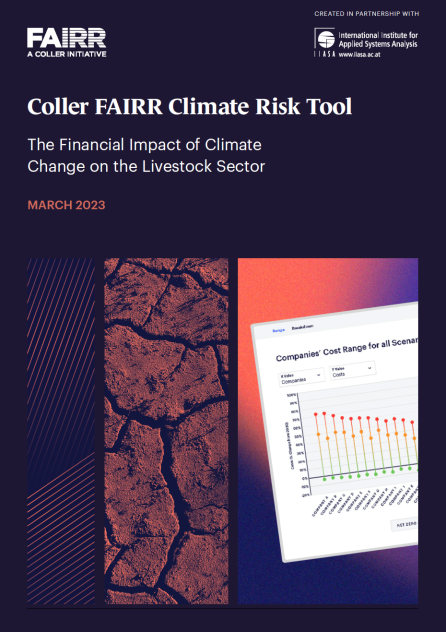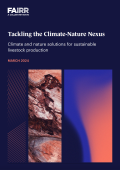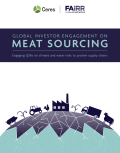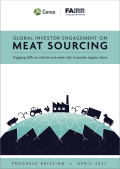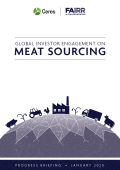Overview
This report presents the findings of the Coller FAIRR Climate Risk Model 3.0, the latest version of the first-ever climate risk model for the meat and dairy industry. The model is accompanied by an interactive online tool – the Coller FAIRR Climate Risk Tool 3.0 – that showcases company-level impacts on costs and profitability.
By integrating macro-level information from an integrated assessment model with company-level information, it shows the financial implications for these companies under Intergovernmental Panel on Climate Change (IPCC)-aligned and Network for Greening the Financial System (NGFS)-aligned scenarios in 2030 and 2050.
At the sector level, analysis of the modelling results shows feed costs and carbon pricing emerging as the most material risks over the course of the next three decades, with the latter emerging more prominently in longer-term scenarios. Regional exposure of a company and types of protein produced are also key determinants of the magnitude of physical and transition risks.
A “high climate impact” scenario in 2030 and 2050 sees North American pork and poultry producers incurring the largest increase in feed costs, due to their high dependency on feed crops. Shifts in supply and demand of key feed crops, combined with climate-related declines in crop yields, result in rising crop prices.
Companies in regions producing a high share of emissions-intensive proteins (i.e. beef producers in Latin America) stand to have their profits most severely eroded by carbon prices in 2050.
While dairy cattle are widely known to be more vulnerable to heat stress, our model shows more significant cost increases for beef producers. This is because the reduction in feed intake results in a much greater reduction in output among beef cattle.
In the face of climate change, even the biggest livestock producers are falling short of fully capturing the untapped opportunities presented by increasing their exposure to alternative proteins. At the current growth rate, based on our estimates, even the two companies that can be expected to have a high share of the alternative protein market relative to their peers, may only make up less than 10% of the total estimated North American alternative protein market in 2050.
The model and the online tool are intended to help investors and policymakers reach informed strategic decisions, enhance risk-and-return assumptions, understand key value drivers and engage with protein-producing companies about their strategic mitigation and adaptation plans in relation to the consequences of climate change.

